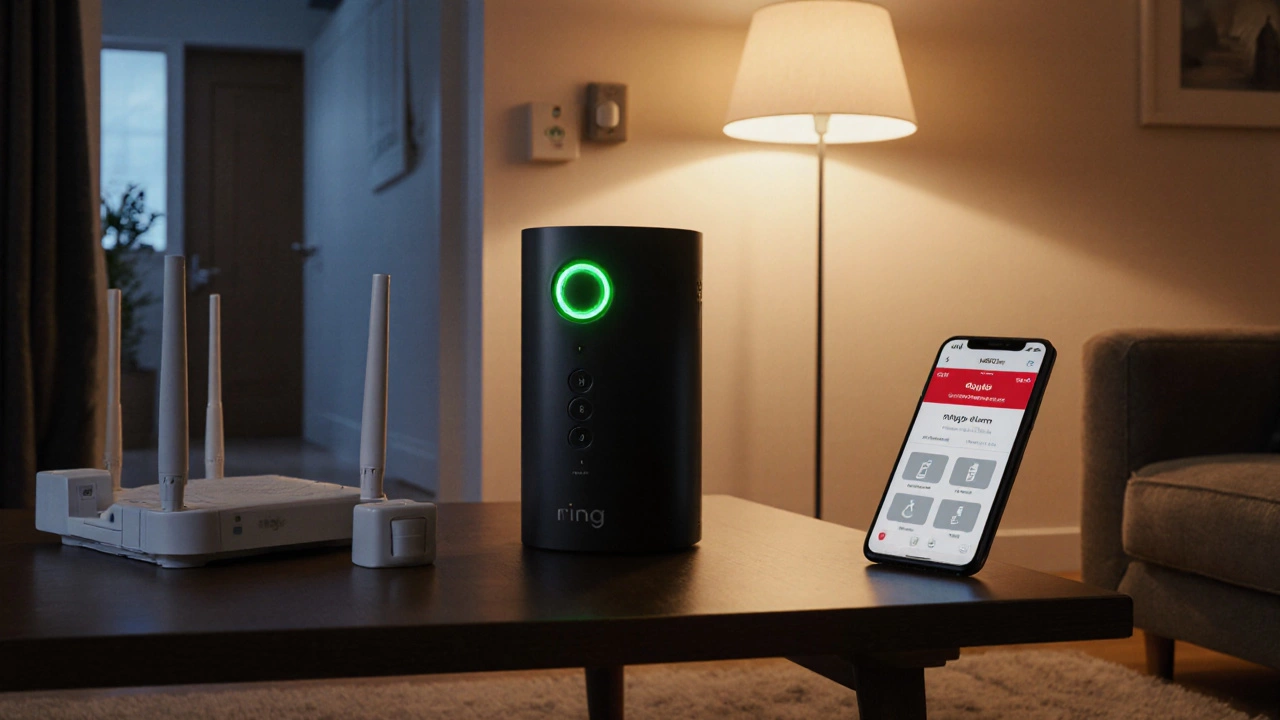When dealing with Ring Alarm Wi‑Fi outage, a loss of internet connection that stops the Ring Alarm from talking to its monitoring service. Also known as Ring connectivity failure, it can leave your home vulnerable in seconds. The problem usually ties back to two core things: the Ring Alarm, a battery‑backed, sensor‑rich security system, and the Wi‑Fi network, which provides the data pathway to the cloud. Understanding how these two interact is the first step toward a reliable setup.
A Ring Alarm outage doesn’t just cut off alerts; it shakes the entire home security system. When the link drops, motion sensors and door contacts still detect intrusions, but the signal never reaches your phone or the monitoring center. That gap can mean missed alarms, delayed response, and a false sense of safety. The outage also disables automation that can lock doors or turn on lights, turning a smart home into a regular house until the connection is restored.
Fixing the issue starts with the router. Power‑cycle it, check that the SSID isn’t hidden, and make sure the Ring Alarm sits within a strong signal zone. If the router supports dual‑band, use the 2.4 GHz band – it penetrates walls better than 5 GHz. Updating firmware on both the router and the Ring base station often clears hidden bugs that cause intermittent drops. Many users also benefit from a dedicated Wi‑Fi point for the alarm, avoiding traffic spikes from streaming devices.
Battery health plays a hidden role. While the alarm’s internal battery keeps sensors alive during a power cut, it doesn’t replace a missing Wi‑Fi link. However, a weak battery can cause the base station to reboot, which looks like a network outage. Replace the battery once it falls below 30 % and keep an eye on the low‑battery alerts in the app. Pairing a small UPS with the router adds another layer of protection, ensuring the internet stays up even when the house loses power.
For those with a broader smart‑home ecosystem, integration points matter. A Ring Alarm often talks to platforms like Alexa or Google Home, and a broken Wi‑Fi link can break those routines as well. Verifying that the Ring skill or action is still authorized after a router reset prevents automation from silently failing. Some users switch to a mesh Wi‑Fi system, which spreads the signal more evenly and reduces dead spots where the alarm might otherwise lose connection.
The monitoring side matters, too. Ring’s cloud service expects a heartbeat every few minutes; if it doesn’t receive one, it flags a connectivity issue and may send you a notification. Checking the notification settings ensures you’re alerted immediately, not hours later. In critical environments – like a home with a baby monitor or an elderly relative – consider a secondary alert method such as a cellular backup or a local siren that sounds even without internet.
Armed with these insights, you’ll know why a Ring Alarm Wi‑Fi outage happens, how it ripples through your security and smart‑home setup, and what concrete steps you can take to prevent it. Below you’ll find articles that dive deeper into costs, sensor choices, motion‑sensor types, and more – all aimed at keeping your home safe and connected.

Learn what happens to your Ring Alarm when the Wi‑Fi drops, how alerts are handled, and steps to keep your home secure during outages.